Jacksonville, Fl. — The “Buresh Bottom Line”: Always be prepared!.....First Alert Hurricane Survival Guide... City of Jacksonville Preparedness Guide... Georgia Hurricane Guide.
STAY INFORMED: Get the * FREE * First Alert Weather app
FREE NEWS UPDATES, ALERTS: Action News Jax app for Apple | For Android
WATCH “Preparing for the Storm”
WATCH “The Ins & Outs of Hurricane Season”
READ the First Alert Hurricane Center “Survival Guide”
LISTEN & WATCH “Surviving the Storm” - WOKV Radio & Action News Jax
***** ALWAYS CHECK & RE-CHECK THE LATEST FORECAST & UPDATES! *****
REMEMBER WHEN A TROPICAL STORM OR HURRICANE IS APPROACHING: Taping windows is *NOT* helpful & will not keep glass from breaking.
Realize the forecast cone (”cone of uncertainty”) is the average forecast error over a given time - out to 5 days - & *does not* indicate the width of the storm &/or damage that might occur.
** No tropical systems will directly impact Jacksonville/NE Fl./SE Ga. through Labor Day & into the upcoming week.... **
A lead wave - ‘91-L’ - came off the coast of Africa late last week & was upgraded to tropical storm Earl Friday evening. Indications are that Earl will turn northward well to the east of the U.S. through next week. There may be an increase in swells + a heightened rip current risk next week from Fl. to Chesapeake Bay depending on the exact location & strength of the system. Satellite imagery shows some attempts at organization including strong burst of intense convection. A few occasional squalls of heavy rain & gusty winds will impact Puerto Rico & nearby islands through Sunday night but severe impacts are not expected.
Forecast models are in pretty good agreement now. The GFS model remains the fastest & strongest as well as the farthest to the east. The European model is now following suit on strength but is still slower & more to the west. Neither solution would explicitly show a threat to the east coast of the U.S. *but* if the next trough of low pressure next week misses Earl then we’ll have to see how steering currents evolve & how the next trough interacts in the long term - a good 7-10 days away. But all indications continue to point to a tropical cyclone staying far to the east of Florida & well east of the U.S. east coast. It’s likely that Earl will eventually become a hurricane while moving north/northeast over the Western Atlantic. Shear will decrease some by midweek & will orient more from a westerly component which may not be as detrimental to Earl’s organization as the shear out of the southwest at 30+ mph has been in recent days. In fact, a period of rapid intensification is possible by midweek.
In any case, no real significant impacts for the Caribbean Islands it would appear... nor the Bahamas or Florida outside of some rough surf & a higher rip current risk depending - again - on the exact location & intensity of Earl. There could be an eventual threat to Bermuda, especially if Earl ends up moving more north vs. turning more northeast.


San Juan radar imagery:


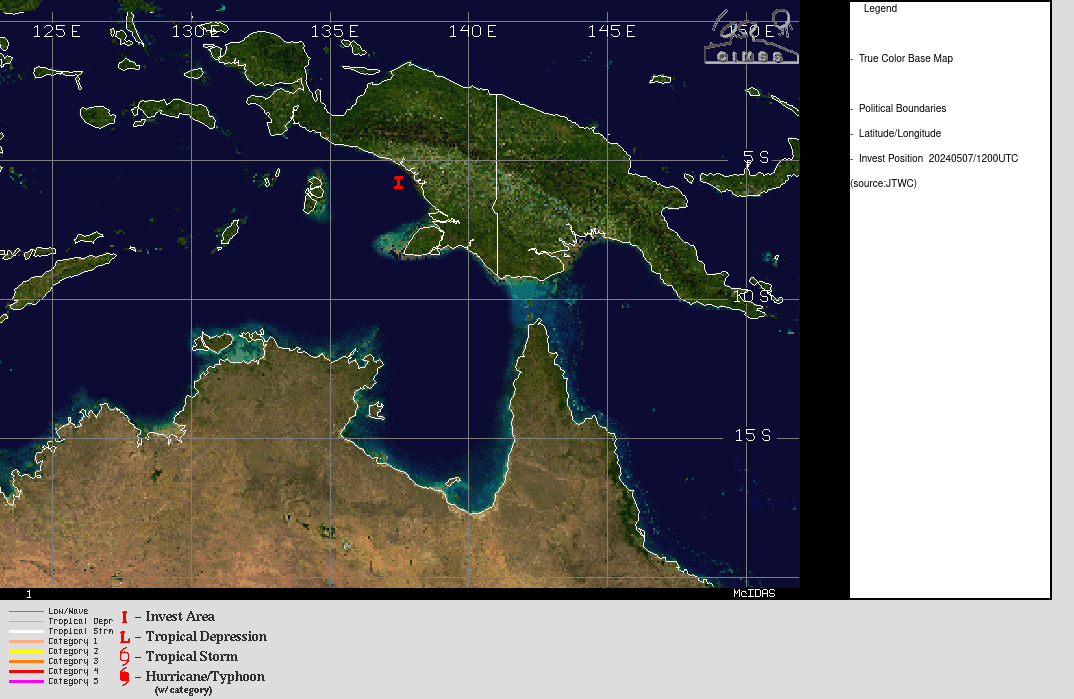
Tropical depression #5 formed early Thu. & was upgraded to tropical storm “Danielle” later in the morning then to a hurricane Fri. morning - the first of the Atlantic season well past the avg. 1st hurricane date of Aug. 11th... then back to a tropical storm early Sat. before regaining hurricane status Sat. evening. Danielle is over the middle of the N. Atlantic hundreds of miles E/NE of Bermuda & well west of the Azore Islands. The storm is essentially “stuck” over the N. Atlantic & won’t move a lot through Monday with intensity leveling off some due to upwelling now & less favorable overall conditions next week. An upper level trough moving over the NW Atlantic next week should eventually pick up the system steering Danielle to the northeast over open water.
Meanwhile... a couple of active tropical waves are over the far E. Atlantic with some gradual development possible.





The MJO continues to evolve. In simplest terms: the green lines on the map below indicate “rising” air & *can* be more conducive for the development of tropical systems. The brown lines indicate “sinking” air which is generally less favorable. Sinking air (brown lines) has spread over the much of the Central & E. Pacific indicating generally less favorable conditions for tropical cyclones while rising air is over the Indian Ocean & W. Pacific (where 3 tropical cyclones have developed during the last 10 days) & is now spreading over a good portion of the Atlantic. A continued transition to rising air across the Atlantic is forecast as we get deeper into Sept.
So time will tell & - in the end - just how significant the next few weeks might be from a tropical standpoint will be dictated by where any tropical systems go... if there are landfalls... & then how strong the system is or isn’t. Either way, it’s time to be vigilant & prepared as we reach the peak of the hurricane season Sept. 10.
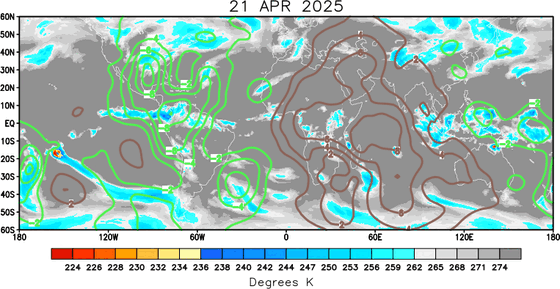

September origins:
Averages below based on climatology for the Atlantic Basin through September. This season so far is well below avg.:

Wind shear:




Saharan dust spreads west each year from Africa by the prevailing winds (from east to west over the Atlantic). Dry air - yellow/orange/red/pink. Widespread dust is indicative of dry air that can impede the development of tropical cyclones. However, sometimes “wanna’ be” waves will just wait until they get to the other side of - or away from - the plume then try to develop if other conditions are favorable. In my personal opinion, way too much is made about the presence of Saharan dust & how it relates to tropical cyclones. In any case, we’ve had several large dust plumes spread west to the Caribbean & Gulf with the peak of Saharan dust typically in June & July.

2022 names..... “Danielle” is the next name on the Atlantic list (names are picked at random by the World Meteorological Organization... repeat every 6 years). Historic storms are retired [Florence & Michael in ’18... Dorian in ’19 & Laura, Eta & Iota in ‘20 & Ida in ‘21]). In fact, this year’s list of names is rather infamous with “Charley”, “Frances”, “Jeanne” & “Ivan” retired from the ‘04 list (all hit Fl.) & “Matthew” was retired in 2016. The WMO decided - beginning last year - that the Greek alphabet will be no longer used & instead there will be a supplemental list of names if the first list is exhausted (has only happened three times - 2005, 2020 & 2021). The naming of tropical cyclones began on a consistent basis in 1953. More on the history of naming tropical cyclones * here *.





East Atlantic:





Mid & upper level wind shear (enemy of tropical cyclones) analysis (CIMMS). The red lines indicate strong shear:
Water vapor imagery (dark blue indicates dry air):

Deep oceanic heat content over the Gulf, Caribbean & deep tropical Atlantic:

Sea surface temp. anomalies:


SE U.S. surface map:

Surface analysis centered on the tropical Atlantic:

Surface analysis of the Gulf:

Caribbean:

GFS wave forecast at 48 & 72 hours (2 & 3 days):
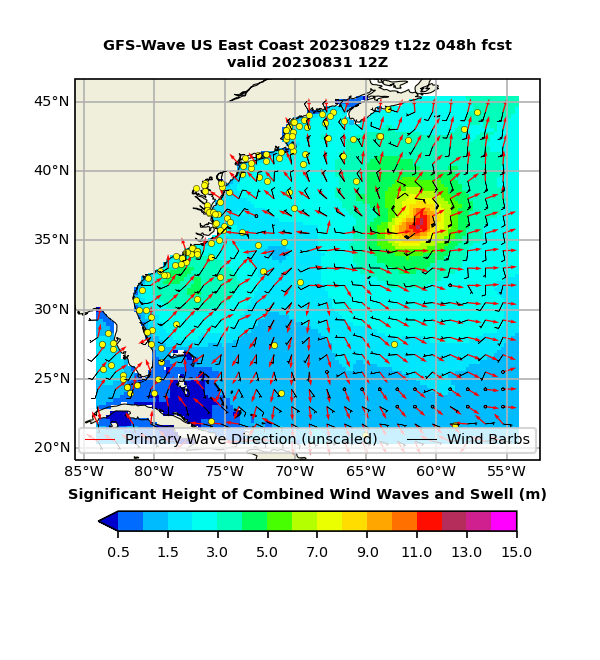

Atlantic Basin wave period forecast for 24, 48 & 72 hours respectively:




Updated Atlantic seasonal forecast from early Aug. - NOAA & CSU:
The East Pacific:
Javier has become post-tropical to the west of the Baja of California with the low level swirl of low clouds to continue westward.
Another disturbance should develop soon into a tropical cyclone off the coast of Mexico a couple of hundred miles south of Acapulco & could threaten parts of the west coast of Mexico & the Baja by late in the week/next weekend.



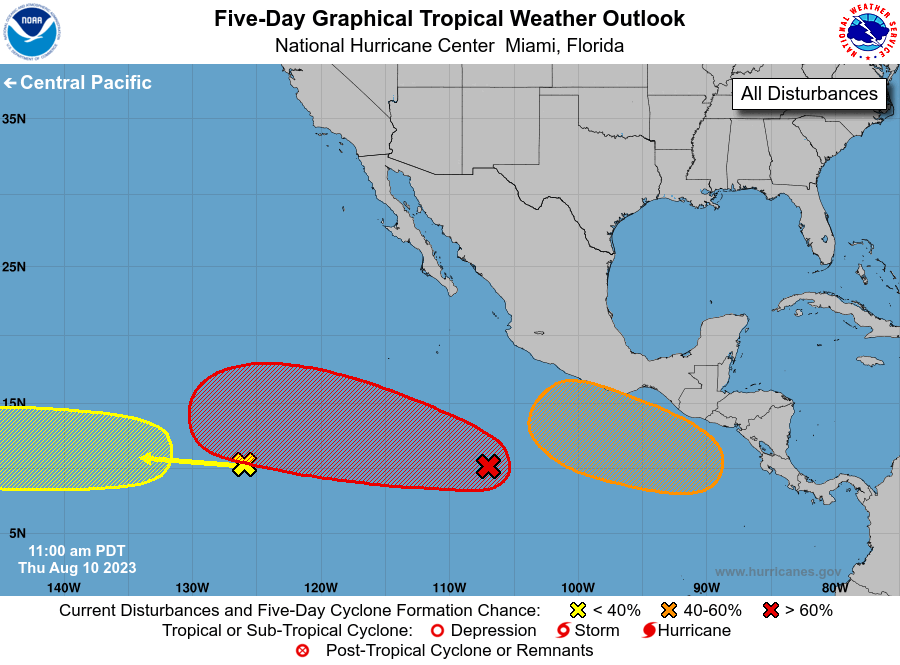
West Pacific:

Global tropical activity:

Typhoon “Hinnamnor” (a super typhoon at times) has made the slow turn to the north & will start to accelerate to the north/northeast impacting South Korea Mon.-Tue. It appears Hinnamnor will stay far enough west of Japan to preclude significant impacts.


Cox Media Group

:quality(70)/cloudfront-us-east-1.images.arcpublishing.com/cmg/WW5AJL3ARQUGDQMAQUNSFX4CLE.jpg)

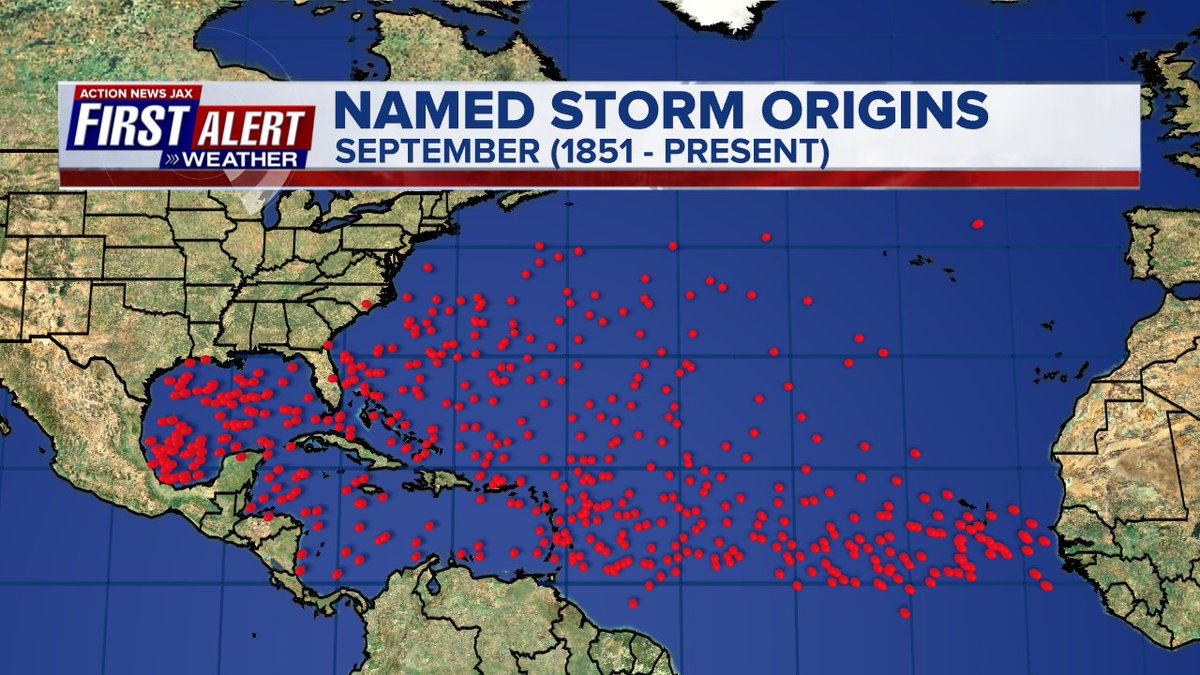
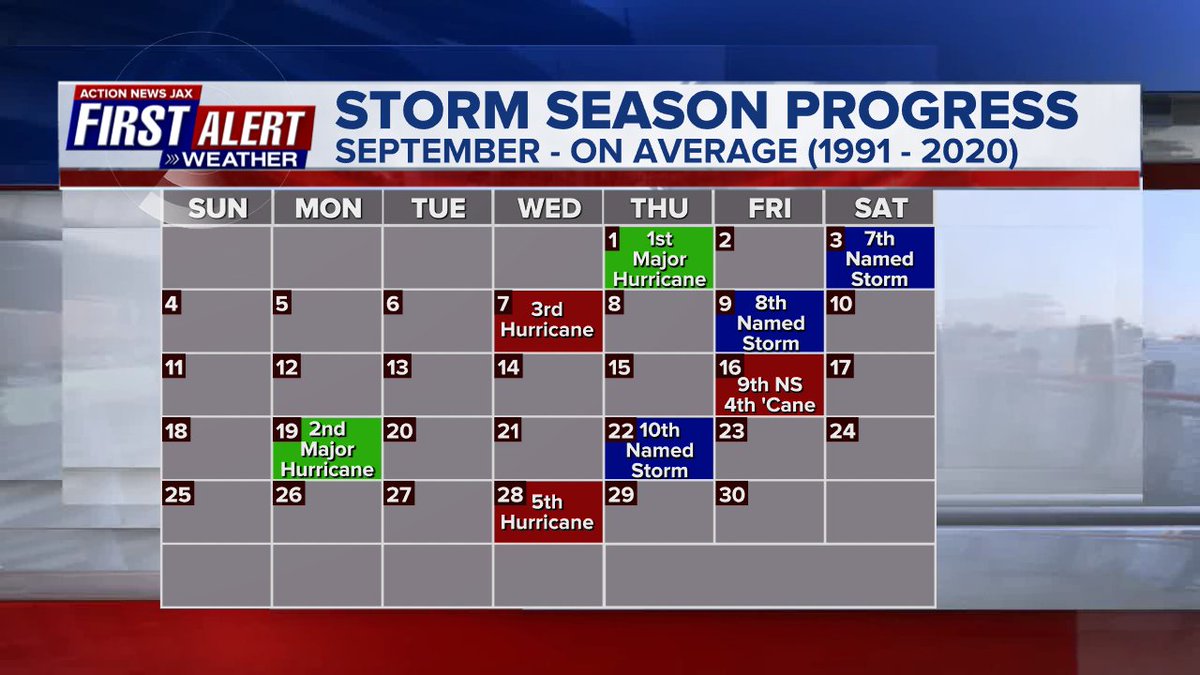
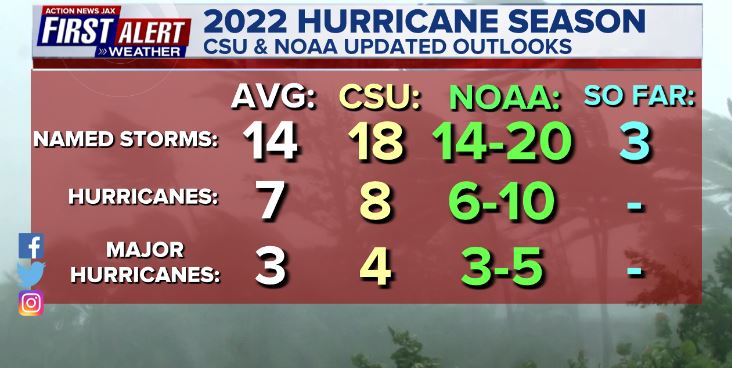
:quality(70)/cloudfront-us-east-1.images.arcpublishing.com/cmg/HJ3L3HBBJBH6PB5ZFB3SVGFXSU.png)
:quality(70)/cloudfront-us-east-1.images.arcpublishing.com/cmg/SKX4RKW645ERTATCLA4V2FVRKQ.png)
:quality(70)/cloudfront-us-east-1.images.arcpublishing.com/cmg/SCWUKX27NRFXVFR2KCQYQ3ZPQY.jpg)
:quality(70)/cloudfront-us-east-1.images.arcpublishing.com/cmg/K6OREARNAFCUVNXWZV2C57LXIU.jpg)
:quality(70)/cloudfront-us-east-1.images.arcpublishing.com/cmg/V7JDMMD6JJEEHIL6C7OSLV3ABU.png)
:quality(70)/cloudfront-us-east-1.images.arcpublishing.com/cmg/EBWNOFP5XHWCEXLMAWSQRUXZE4.jpg)
:quality(70)/cloudfront-us-east-1.images.arcpublishing.com/cmg/XC6LWTD42ZEZBRC2DMD5E2URYU.jpg)
:quality(70)/cloudfront-us-east-1.images.arcpublishing.com/cmg/PAP7H5VUYNONDGMZNX54CUQDD4.jpg)
